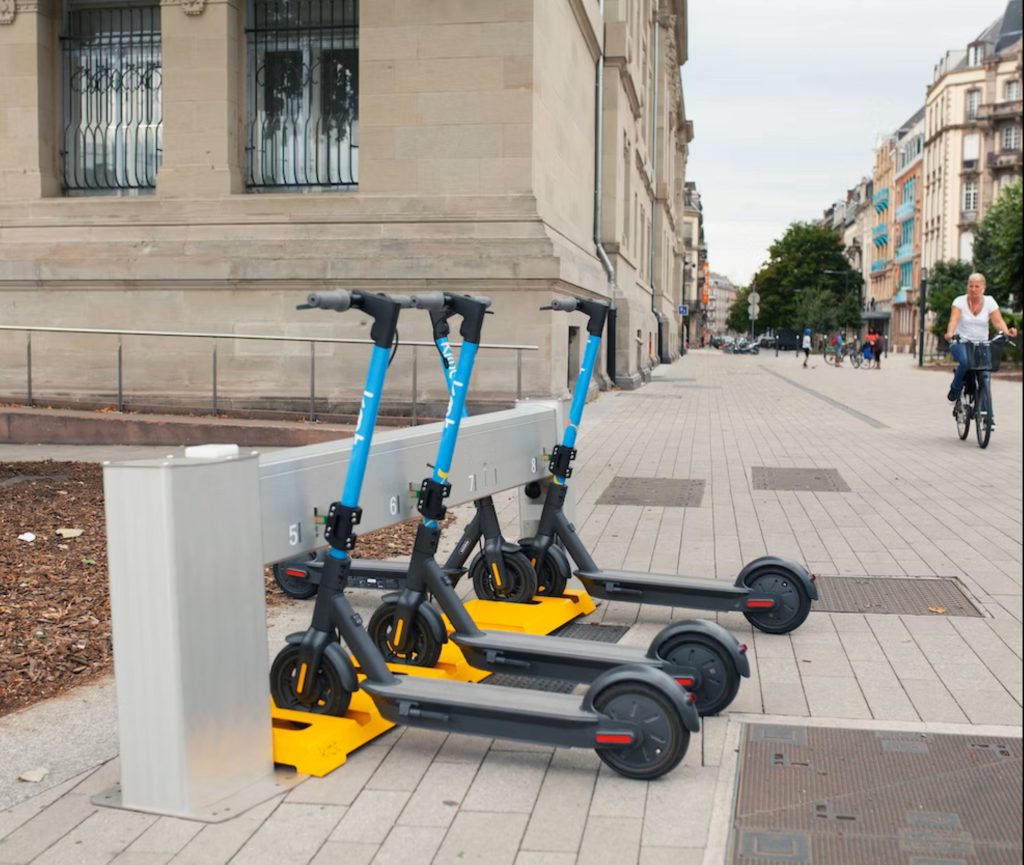Benefits of Green Transportation: Embracing Eco-Friendly Mobility
*We may earn a commission for purchases made using our links. Please see our disclosure to learn more.
As an avid electric scooter enthusiast and advisor, I can’t help but stress the paramount importance of embracing eco-friendly mobility options in our modern world. With environmental concerns at an all-time high, our transportation choices play a pivotal role in shaping the future of our planet. Let’s dive into the myriad reasons why Benefits of Green Transportation matters now more than ever.
Understanding Green Transportation
Green Transportation refers to modes of travel that prioritize environmental sustainability. It encompasses a diverse range of alternatives, including electric vehicles (EVs), bicycles, electric bikes, public transit, and more. These alternatives are strategically designed to minimize pollution, diminish our carbon footprint, and collectively contribute to a cleaner, healthier future for our planet and its inhabitants.
Reducing Carbon Emissions
Among the most compelling reasons for embracing green transportation is the significant reduction in carbon emissions. Traditional vehicles powered by fossil fuels release harmful greenhouse gases into the atmosphere, accelerating global warming and climate change. Opting for electric vehicles, encompassing bikes and scooters, leads to a substantial decrease in our carbon footprint, actively driving us toward a more sustainable future.
Cleaner Air and Improved Health
The consequences of conventional transportation methods on air quality and public health are far-reaching. Gasoline-powered vehicles emit pollutants that deteriorate air quality and result in a spectrum of health issues. Green transportation, inclusive of electric bikes and vehicles, eliminates tailpipe emissions, culminating in cleaner air and an overall improved state of well-being for communities and their residents.
Minimizing Noise Pollution
Beyond emission-related concerns, traditional vehicles also contribute significantly to noise pollution, impacting both mental and physical well-being. Electric bikes and Electric Scooter operate silently, contributing to creating more serene and tranquil urban environments. Quieter streets facilitate reduced stress levels and enhanced quality of life for residents in densely populated areas.
Diverse Options for Urban Mobility
In an era marked by rapid urbanization, effective urban mobility holds unprecedented importance. Electric bikes, scooters, and various other green modes of transport offer practical solutions for navigating through congested city streets. Their compact size and inherent maneuverability render them ideal for effectively managing traffic and swiftly reaching destinations, thereby enhancing overall urban mobility.
Economic Savings and Long-Term Benefits
Opting for green transportation transcends being just an environmentally conscious decision; it is also financially prudent. Electric vehicles are substantially more energy-efficient and cost-effective to operate compared to traditional gasoline-powered counterparts. Lower costs related to fuel consumption and maintenance translate to tangible long-term financial savings for individuals and communities alike.
Government Incentives and Policies
Governments across the globe are increasingly acknowledging the imperative of transitioning toward green transportation alternatives. Incentives, including tax benefits, rebates, access to dedicated lanes, and favorable policies for electric vehicles, provide compelling reasons for adoption. Accompanying supportive infrastructure development further enhances the allure of electric bikes and vehicles.
Enhanced Convenience and Connectivity
Green transportation options extend unparalleled convenience, particularly in urban settings. Electric bikes, scooters, and other alternatives offer last-mile connectivity, effectively bridging the gap between public transportation and final destinations. The presence of app-based rentals and ride-sharing platforms simplifies access to these vehicles, democratizing eco-friendly mobility solutions.
Community Benefits and Sustainable Lifestyles
Opting for green transportation is not solely an individualistic choice; it collectively benefits entire communities. Choosing electric bikes and vehicles contributes to cleaner neighborhoods, reduced traffic congestion, and instills a stronger sense of shared responsibility for environmental preservation. This fosters a more sustainable and harmonious coexistence among community members.
Addressing Challenges and Future Growth
While green transportation presents a myriad of advantages, it’s imperative to acknowledge and address challenges, such as charging infrastructure limitations and range concerns. As demand for electric bikes and vehicles continues to rise, strategic investments in charging networks and ongoing technological advancements are likely to address these challenges effectively.
Empowering Sustainability Through Choice
As individuals, we wield the power to influence the trajectory of the future through our choices. Embracing green transportation is a powerful means of aligning our actions with our values. By wholeheartedly embracing electric bikes, scooters, and other sustainable alternatives, we are collectively contributing to a greener, healthier world for present and future generations alike.
Green Transportation’s Positive Impact on Urban Mobility
The landscape of urban mobility is undergoing a transformative shift, largely driven by the growing adoption of green transportation. Cities around the world are recognizing the need for sustainable alternatives to address issues like traffic congestion, air pollution, and limited parking spaces.
With electric bikes, scooters, and other eco-friendly modes of transport becoming increasingly accessible, urban residents are experiencing newfound freedom in their daily commutes. These compact vehicles effortlessly navigate through traffic, effectively reducing congestion and travel time. As a result, not only do individuals reach their destinations faster, but the overall flow of urban traffic improves, benefiting everyone on the road.
Last-Mile Connectivity
The proliferation of electric bike-sharing programs and scooter rentals in urban centers is evidence of the changing tide. Residents and visitors alike have easy access to these vehicles through mobile apps, promoting a culture of shared transportation. This not only reduces the number of private vehicles on the road but also minimizes the demand for parking space, freeing up urban real estate for other community needs.
The Socio-Economic Impact of Green Transportation
Beyond the immediate environmental advantages, green transportation has far-reaching socio-economic implications. The shift towards electric bikes, scooters, and similar modes of transport fuels job creation in industries related to manufacturing, maintenance, and service.

As the demand for electric vehicles grows, so does the need for skilled technicians, charging station operators, and sustainable infrastructure developers. Moreover, green transportation also nurtures local economies.
Studies have shown that people who choose alternatives like electric bikes tend to spend more money in their communities compared to those who rely on traditional vehicles. This can be attributed to factors like reduced commuting costs and increased engagement with local businesses while traveling on eco-friendly vehicles.
The Role of Technology in Green Transportation
The fusion of technology and the benefits of green transportation has given rise to innovative solutions that enhance user experience and address various challenges. Electric bikes and scooters often come equipped with GPS navigation, allowing riders to find the most efficient routes and avoid congested areas.
Additionally, many vehicles feature smart locking mechanisms, ensuring the security of the vehicle when not in use. Furthermore, app-based platforms facilitate seamless rentals and rides. Users can easily locate available vehicles nearby, unlock them with a simple scan, and embark on their journey. This user-friendly approach not only encourages adoption but also contributes to the overall convenience of urban mobility.
Overcoming Infrastructure Hurdles for Widespread Adoption
While the benefits of green transportation are undeniable, widespread adoption hinges on the availability of supporting infrastructure. Governments and private entities play a pivotal role in establishing charging networks, designated bike lanes, and parking facilities for electric vehicles. Investments in these areas are essential to address concerns such as range anxiety and limited charging options.

As these infrastructure improvements take shape, the barriers to entry for green transportation continue to diminish. Individuals are more likely to choose eco-friendly options when they have access to charging stations at convenient locations and the assurance of a well-connected network.
Educational Initiatives and Public Awareness
Education remains a critical aspect of accelerating the transition to green transportation. As an advisor, I firmly believe in the power of awareness campaigns and educational initiatives that highlight the advantages of eco-friendly mobility. By dispelling myths, addressing concerns, and showcasing real-world success stories, we empower individuals to make informed decisions that align with their values and benefit the environment.
Conclusion
In a world where the implications of transportation choices are far-reaching, adopting the benefits of green transportation transcends being a mere trend; it’s a compelling necessity. Whether through the utilization of electric bikes, scooters, or other eco-friendly vehicles, every conscious choice made propels us toward a more sustainable future. By prioritizing environmental well-being, personal health, and the collective prosperity of our communities, we forge a path toward a world that is not only vibrant but also resilient.
FAQs
Q1: What types of green transportation options are available?
Green transportation encompasses various alternatives, including electric bikes, scooters, electric vehicles (EVs), bicycles, and public transit. These options collectively aim to reduce environmental impact.
Q2: How do green transportation options contribute to sustainability?
Green transportation choices, such as electric bikes and vehicles, reduce emissions and reliance on fossil fuels, resulting in decreased pollution and a more sustainable environment.
Q3: Are electric vehicles only suitable for urban areas?
While electric vehicles like bikes and scooters are well-suited for urban environments, they are increasingly being designed for broader usage, catering to suburban and even rural commuting needs.
Q4: Do green transportation alternatives save money in the long run?
Yes, adopting green transportation can lead to cost savings through reduced fuel and maintenance expenses. Electric vehicles, for instance, have lower operational costs compared to traditional gasoline-powered vehicles.
Q5: How do government policies impact the adoption of green transportation?
Government policies, such as incentives, rebates, and infrastructure investments, play a pivotal role in promoting the adoption of green transportation alternatives and shaping the transition to a sustainable transportation landscape.




